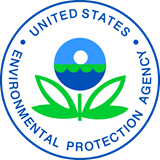Jul 15, 2019EPA makes decision to register new uses for the insecticide sulfoxaflor
EPA is registering new uses for the insecticide sulfoxaflor and restoring previously registered uses.
The agency said in a news release this decision is backed by substantial data and ensures that when used according to the label, sulfoxaflor poses no significant risk to human health and lower risk to non-target wildlife, including pollinators, than registered alternatives. Sulfoxaflor is an effective tool for

Basic information on uses
Sulfoxaflor is a sulfoximine, a newer insecticide class that was first registered by EPA in 2013. It is effective against pests that are becoming resistant to carbamate, neonicotinoid, organophosphate and pyrethroid insecticides.
Sulfoxaflor is an important and highly effective tool for growers that targets difficult pests such as aphids and tarnished plant bugs (lygus). These pests can cause significant economic loss leading several states to request emergency exemptions in recent years. There are few viable alternatives for sulfoxaflor. In many cases, alternative insecticides may be effective only if applied repeatedly, whereas sulfoxaflor typically requires fewer applications resulting in less risk to non-target pests and plants.
2019 registration decision
EPA’s 2019 registration decision for sulfoxaflor adds the following new uses: alfalfa, corn, cacao, grains (e.g., millet, oats), pineapple, sorghum, teff, teosinte, and tree plantations. This action also restores citrus, cotton, cucurbits, soybeans and strawberries to the labels.
This decision also removes the following application restrictions originally put in place by the 2016 registration decision. Widely-used alternatives do not have these restrictions and may pose higher risk to non-target wildlife than sulfoxaflor.
- EPA removed the prohibition of use on crops grown for seed because pollinator protection restrictions, including low use rates, will be in place regardless of whether the crop is grown for seed or for commodity harvest.
- EPA removed the restriction to post-bloom application for bee-attractive crops only when there is low risk or limited potential for exposure to bees.
- The 12-foot buffer requirement was lifted because EPA believes the spray drift mitigation requirements on labels are adequate to limit drift.
- EPA removed the 2016 restriction against tank mixing because data show that there is no additional risk when sulfoxaflor is tank mixed with other compounds.
Human and ecological health
Under the Federal Insecticide, Fungicide and Rodenticide Act (FIFRA), EPA must determine that the use will not cause unreasonable adverse effects on human health or the environment.
After reviewing the data, EPA has determined that, when used according to the label requirements, sulfoxaflor does not pose a risk of concern for people, including infants, children and agricultural workers and that overall, sulfoxaflor presents a low risk to birds, mammals, fish, and other aquatic animals and plants. To reduce the risk to pollinators, the label will include instructions for pollinator protection and crop-specific restrictions. See the following section for more information on measures to protect pollinators.
Pollinator protection
To ensure that sulfoxaflor can be used by growers while still maintaining protection for pollinators, EPA reviewed additional studies provided to the Agency on sulfoxaflor’s effect on bee colonies and over a dozen studies on the potential for bees to be exposed post-application.
To minimize potential exposure to bees near treated areas, the following statements/requirements are required on end-use product labels:
Environmental Hazards Statement:
“This product is highly toxic to bees and other pollinating insects exposed to direct treatment or to residues in/on blooming crops or weeds. Protect pollinating insects by following label directions intended to minimize drift and reduce pesticide risk to these organisms.”
The RT25 (how long foliar residues of sulfoxaflor exhibit toxicity to honey bees):
“The RT25 for this product is less than or equal to 3 hours.”
Directions for Use:
“Notifying known beekeepers within 1 mile of the treatment area 48 hours before the product is applied will allow them to take additional steps to protect their bees. Also, limiting application to times when managed bees and native pollinators are least active, e.g.2 hours prior to sunset or when the temperature is below 50°F at the site of application will minimize risk to bees.”
To further protect pollinators from potential exposure, EPA requires the following crop specific restrictions:
- Citrus: Only one application is allowed between 3 days before bloom and until after petal fall per year
- Ornamentals: Do not make more than one application during bloom. The single application during bloom must not exceed a rate of 0.071 lb ai/acre.
- Pome Fruit, Stone Fruit, Tree Nuts and Pistachio: Do not apply this product any time between 3 days prior to bloom and until after petal fall.
- Small Fruit Vine Climbing & Low Growing Berry, Tree Plantations: Do not apply this product any time between 3 days prior to bloom and until after petal fall.
EPA actions and regulatory history
In May 2013, EPA registered sulfoxaflor; however, that registration was canceled by the Ninth Circuit Court of Appeals after the court decided that the registration did not have enough data on the effects on bees.
After the court’s decision, EPA issued a cancellation order to address the use of existing stocks. Although the product registrations were vacated, the tolerances for sulfoxaflor residues on treated commodities that were established under the Federal Food, Drug and Cosmetic Act, remain in place.
In 2016, EPA reevaluated the data and approved registrations for crops that do not attract bees and for crops where sulfoxaflor would be applied when bees would not be present. These changes reduced the risk to bees below EPA’s level of concern such that no additional data requirements were triggered.
In support of the current registration, the registrant submitted additional data on the potential for long-term effects on bees with which EPA conducted a new Tier II assessment. Based on this assessment, EPA restored the remainder of the previously approved uses, added new uses, and removed some of the application restrictions from the 2016 registration.














